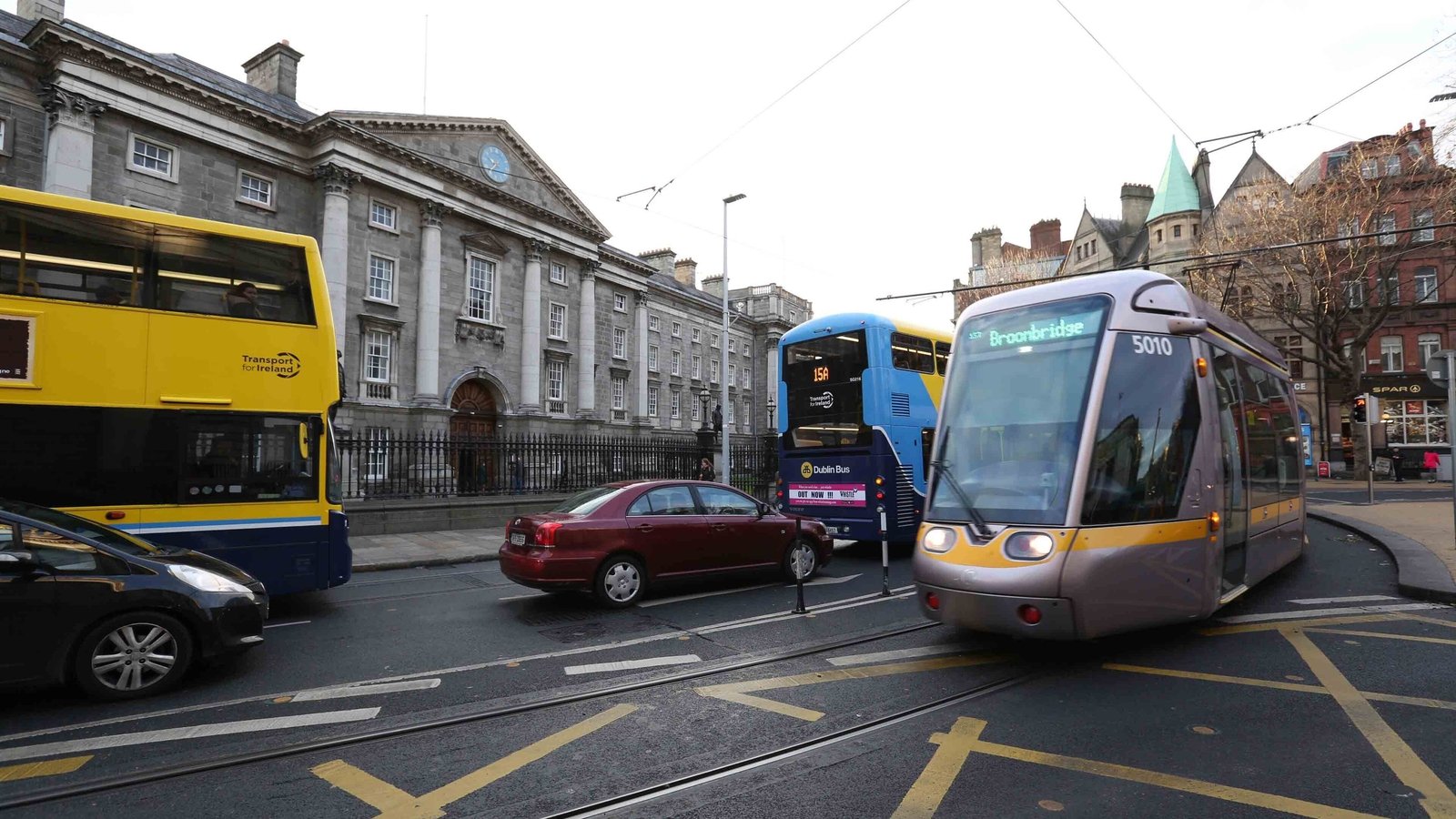A ban on private vehicles travelling on sections of the north and south quays in Dublin city centre comes into effect today.
Dublin City Council said the first phase of the transport plan is designed to prevent cars and delivery vans travelling through the city that are not stopping there.
However, retailers have expressed concern over the potential impact the measures could have on business.
The plan, which has been debated and amended over the past year, will from today significantly change how private vehicles navigate the city centre.
Council staff were on the north and south quays from early this morning advising motorists about the new traffic layout.
While the majority complied with the directions, the occasional private motorist continued to travel through the new bus gates.
On the north quays, cars and delivery vans can no longer travel from Bachelors Walk to Eden Quay.
They instead must turn left up O’Connell Street.
On the south quays, they cannot drive straight from Burgh Quay to Aston Quay.
They can turn right onto O’Connell Street or left onto D’Olier Street, but left turns from Westmoreland Street to Aston Quay are also not allowed.
Read more:
Analysis: Dublin City Council and businesses await impact of traffic plan
The new rules do not apply to buses, taxis and cyclists and are in place from 7am-7pm Monday to Sunday.
Dublin City Council has said that outside of the 7am to 7pm restriction, all vehicles can travel as before and that there are no changes to disabled bays, loading bays and taxi ranks.
The vast majority of routes to hospitals and city centre car parks will remain the same.
We need your consent to load this rte-player contentWe use rte-player to manage extra content that can set cookies on your device and collect data about your activity. Please review their details and accept them to load the content.Manage Preferences
It said access for residents will be maintained but there may be a different route to or from the area.
The traffic management measures, it said, aim to address the fact that 60% of general traffic in the city centre is not stopping, working or shopping but is simply travelling through the city.
The council said it has been in touch with Sat Nav providers and Google Maps to ensure that their systems are carrying the up-to-date restrictions and that they will have people on the ground to monitor the impact of the changes and respond where necessary.
Dublin City Council have said the plan is designed to prevent private vehicles travelling through the city that are not stopping there.

But businesses have concerns about the impact including Diageo whose trucks carry 75% of the beer they produce down the quays from St James Gate to Dublin Port.
The full effect of the measures will not be felt until after the school holidays end.
Brendan O’Brien, head of technical services at Dublin City Council, said the measures are designed to make Dublin city centre less traffic-oriented.
He said: “We are very conscious that people will still need to access the city as much as possible.
“These measures have been designed to keep access for deliveries, car parks.
“But the aim of the measures is to produce a kind of low traffic environment in the city centre.
“What we’re trying to do is to get people to think about is how they’re moving through the city centre.
So, if you have business in the city centre, if you need to access car parks, you need to do deliveries, they will still all be allowed.
“But if you’re using it as a through route, that is what we’re trying to discourage with these measures.”
Impact of measures will be ‘constantly monitored’ – DCC
However, he said the impact of the measures will be monitored and that if they require changing, the council will take a flexible approach
He said: “We have quite a lot of people out on the ground to try and assist people to make the changes.
“We’ll be constantly monitoring it. If there are changes that are needed, we’ll be quite open to making them.
“But overall, the City Centre Transport Plan does set out that lower traffic neighbourhoods, that we want to kind of create in the city centre.
“We can work around that, as long as we can achieve that goal, we’re quite flexible in how we do that.”
Mr O’Brien said the next phases of the plan, which include changes to the way traffic moves in areas around Pearse Street and Gardiner Street is due to come into effect next year.
‘Timing couldn’t be worse for retailers’ – REI
Retail Excellent Ireland (REI), who has called for the plan to be paused, said it is concerned about the approact taken to the plan.
REI CEO Jean McCabe said: “We all share the same vision of a livable, vibrant, sustainable Dublin city centre.
“But what we do have concern about is the approach.
“Dublin and city retailers were not part of the consultation process. The timing of this plan also couldn’t have been worse for retailers when they’re dealing with rising costs, anti-social behaviour and a big increase in retail crime.
“Car shoppers actually represent a quarter of the spent in the city, and they also spend 60% more than users that use other more sustainable modes of transport.
“So this customer is a huge cohort of what is keeping retailers trading, day in, day out, and certainly the lifeblood for a lot of retailers.
“And any barrier that could divert that customer elsewhere is of major concern. We’ve always argued for that the city is too fragile for a trial-and-error approach.
“We believe the focus should be on creating a safe, welcoming environment first. Only then should we consider any major changes to traffic and accessibility.”
A working group will meet to monitor the impact of the changes in two weeks’ time.

